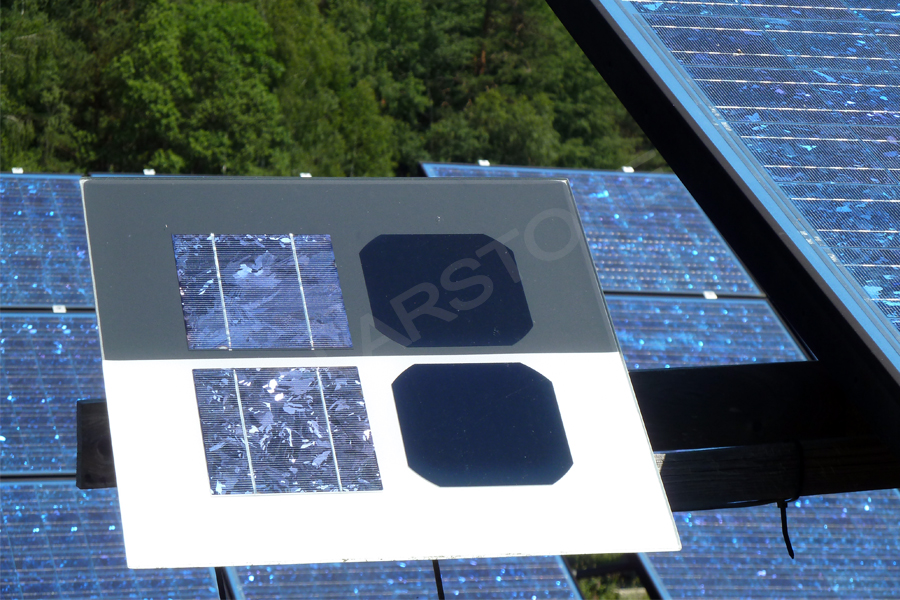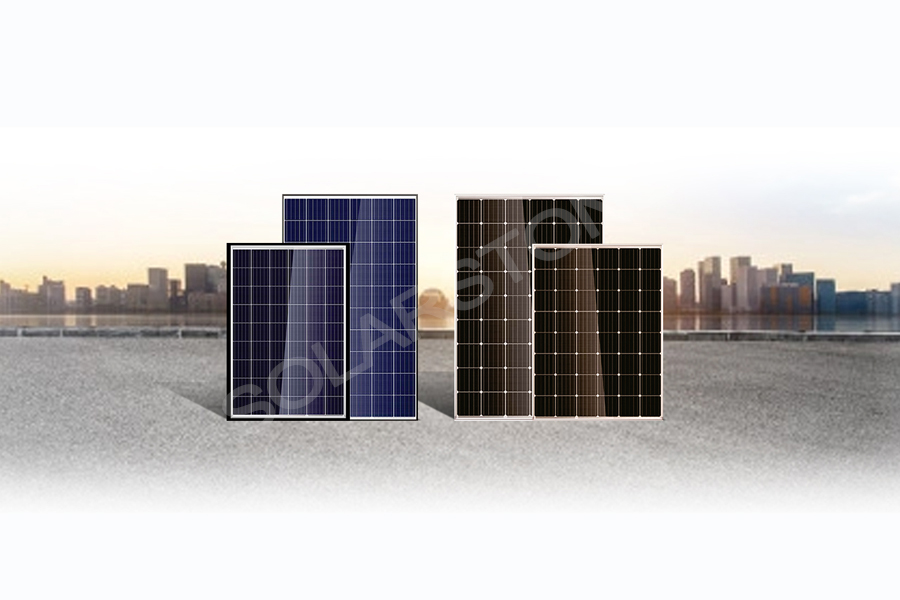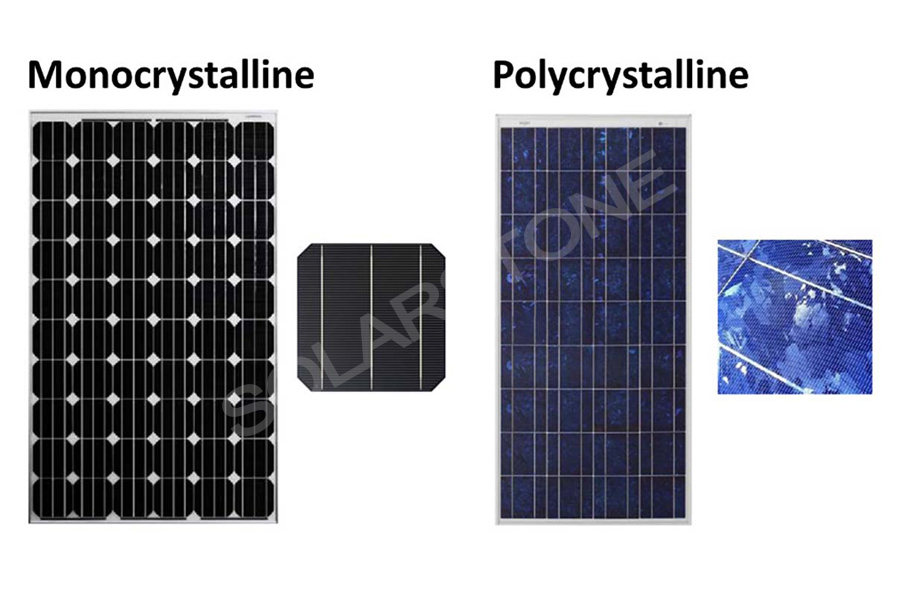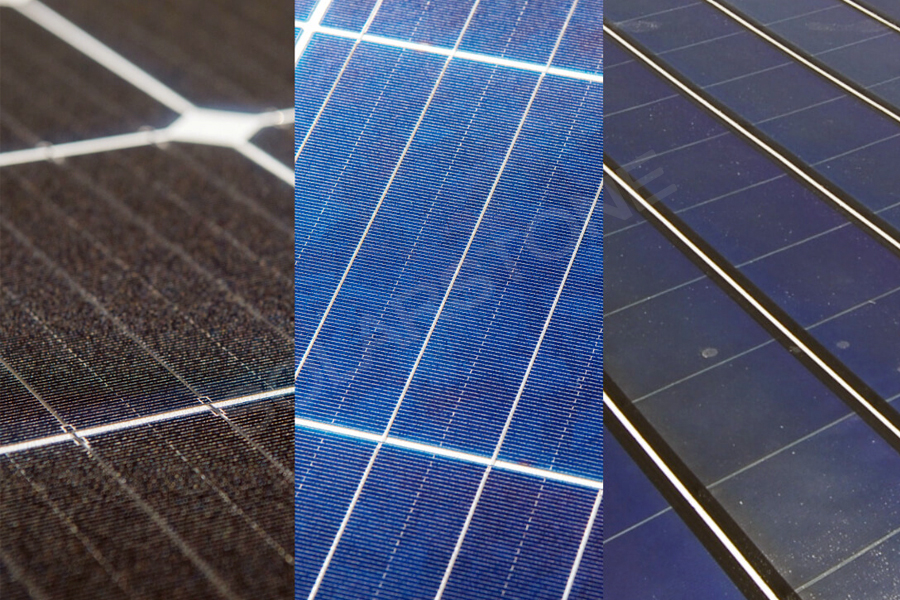Common solar panels in the market can be divided into mono, poly and thin film according to the type of solar cell. Mono and poly solar panels account for the largest market share.
Many people will ask: what is the difference between mono and poly solar panels? So whether to use mono or poly solar panel?
Comparison of mono or poly solar panel
First, poly is actually a defective mono.
The silicon wafer first used in the production of solar cells is not like the monocrystalline silicon wafer or polycrystalline silicon wafer produced by special equipment, but the leftover materials or defective products of semiconductor wafers, which is very expensive. With the gradual improvement of the qualification rate of semiconductor wafers, there are fewer and fewer defective wafers available in the market.
When people want to popularize silicon-based solar cells, there is no special solar monocrystalline silicon production equipment. The cost of producing solar cells from semiconductor wafers is daunting. People turn to casting, ingot casting and directional solidification to produce crystalline silicon ingots. This is the source of the so-called “polycrystalline silicon wafer”, although the quality is poor, the cost has decreased significantly.
In other words, people wanted to make mono solar cell from the beginning, but due to the limitation of technology and cost, poly solar cell occupied the mainstream of the market for a long time.
At present, mono solar cells have the highest photoelectric conversion rate among all kinds of solar cells.
Among the silicon-based solar cells developed in the laboratory, the efficiency of monocrystalline silicon cells is 25.0%, and that of polycrystalline silicon cells is 20.4%. In practical application, the conversion rate of monocrystalline silicon cells is generally 19% ~ 20%, and that of polycrystalline silicon cells is generally 17% ~ 18%( (the conversion rate has increased again in recent years)
How to distinguish between mono and poly?
1. Different shapes
The polycrystalline silicon solar cell is a complete square.
The four corners of monocrystalline silicon solar cell are notched, so it is not a complete square.
At present, monocrystalline silicon wafers are obtained from monocrystalline silicon rod slices produced by Czochralski method. Czochralski silicon rod is a round rod. If it is cut into square pieces with the largest area, it is bound to lose more area. However, if you do not cut into squares, but omit four right angle parts and cut into approximate squares with beveled edges, you can maximize the area of the circle and be suitable for processing and installation.
2. Different colors
Polycrystalline silicon solar cell is generally blue
Monocrystalline silicon solar cell is generally black
This is because light propagates directly in different media, and the wavelength will change. The color of light has three basic colors: red, green and blue. When some wavelengths are missing, the color we see will change. Due to the different crystal directions of single crystal and polycrystalline, the reflection spectrum of the material combination changes, so the laminated single crystal solar panel looks black. However, different PECVD processes can also modulate different colors.
3. Different patterns
There is no pattern on the surface of monocrystalline silicon solar cell.
The surface of polycrystalline silicon solar cell has a pattern similar to ice flower.
Whose market share is high?
From 2005 to 2010, poly solar panels were the mainstream. The market share of mono solar panels was smaller than poly solar panels for a unique historical reason: the production process of mono solar panels was more complex than poly solar panels, and the cost was higher than poly solar panels.
At this stage of the rapid development of the photovoltaic industry, the production capacity is the king, and the intensive monocrystal production capacity is difficult to meet the market demand in terms of expansion speed. Poly solar cell technology rapidly expands its share based on relatively cheap cost, thus becoming the dominant technology. But now the situation is just the opposite. Mono solar panels have replaced poly solar panels and become the mainstream of the market.
Who is the best choice?
When selecting solar panels, who is better? For our customers, you can also consider other aspects. The utilization area of mono solar panels will be relatively high. For example, a family can install 5kW poly solar panels, while the same area can be installed with 6kW mono solar panels, which will be better in area utilization. In addition. At present, the mono solar panel has higher conversion efficiency and better electrical properties.






